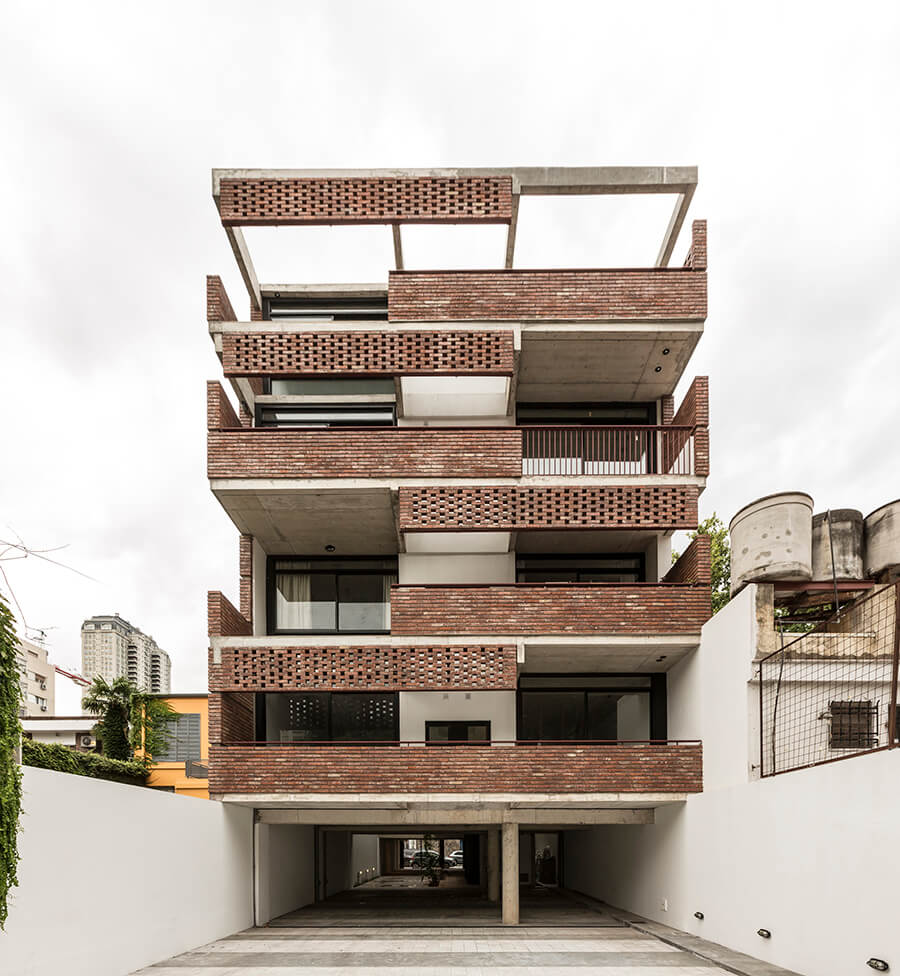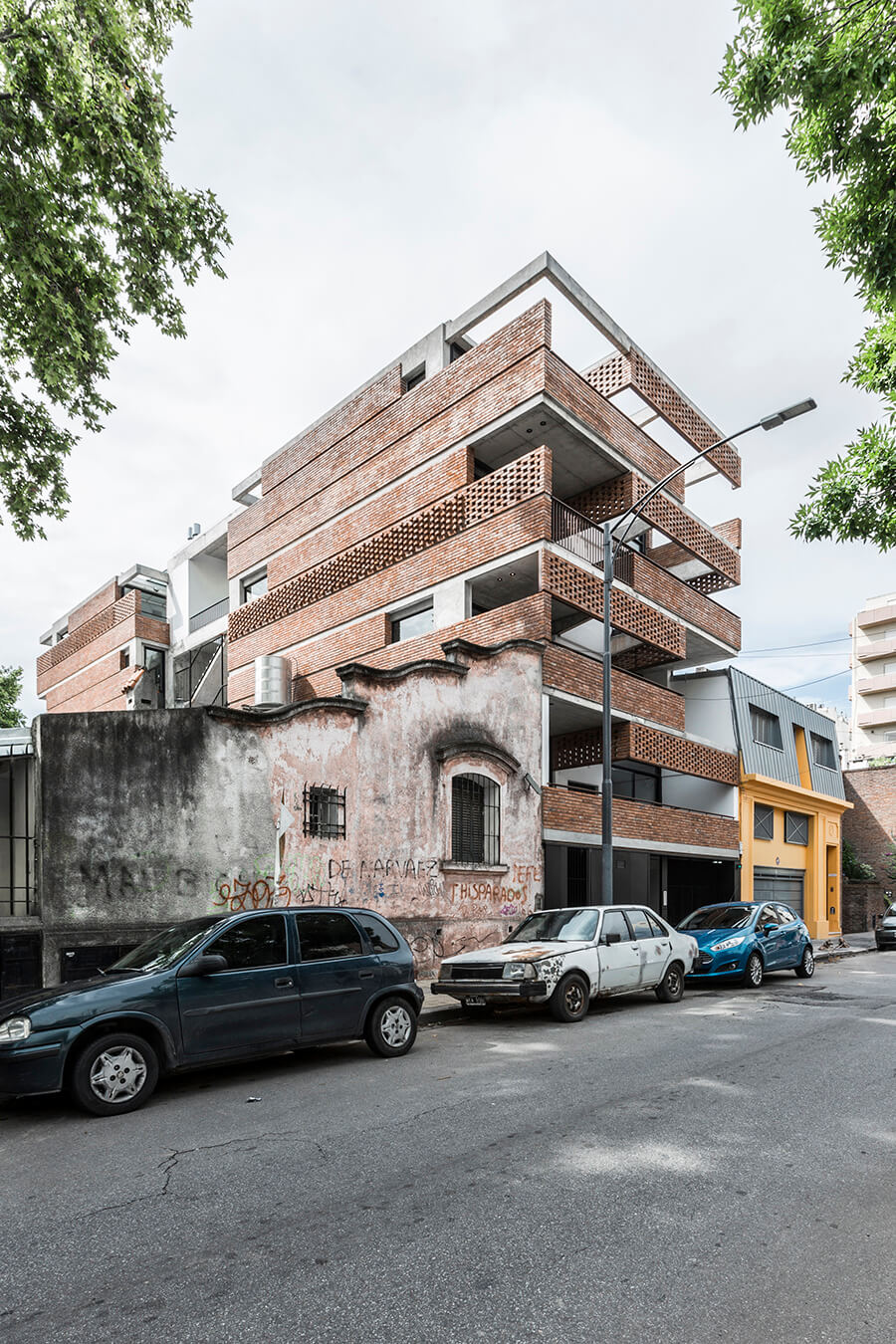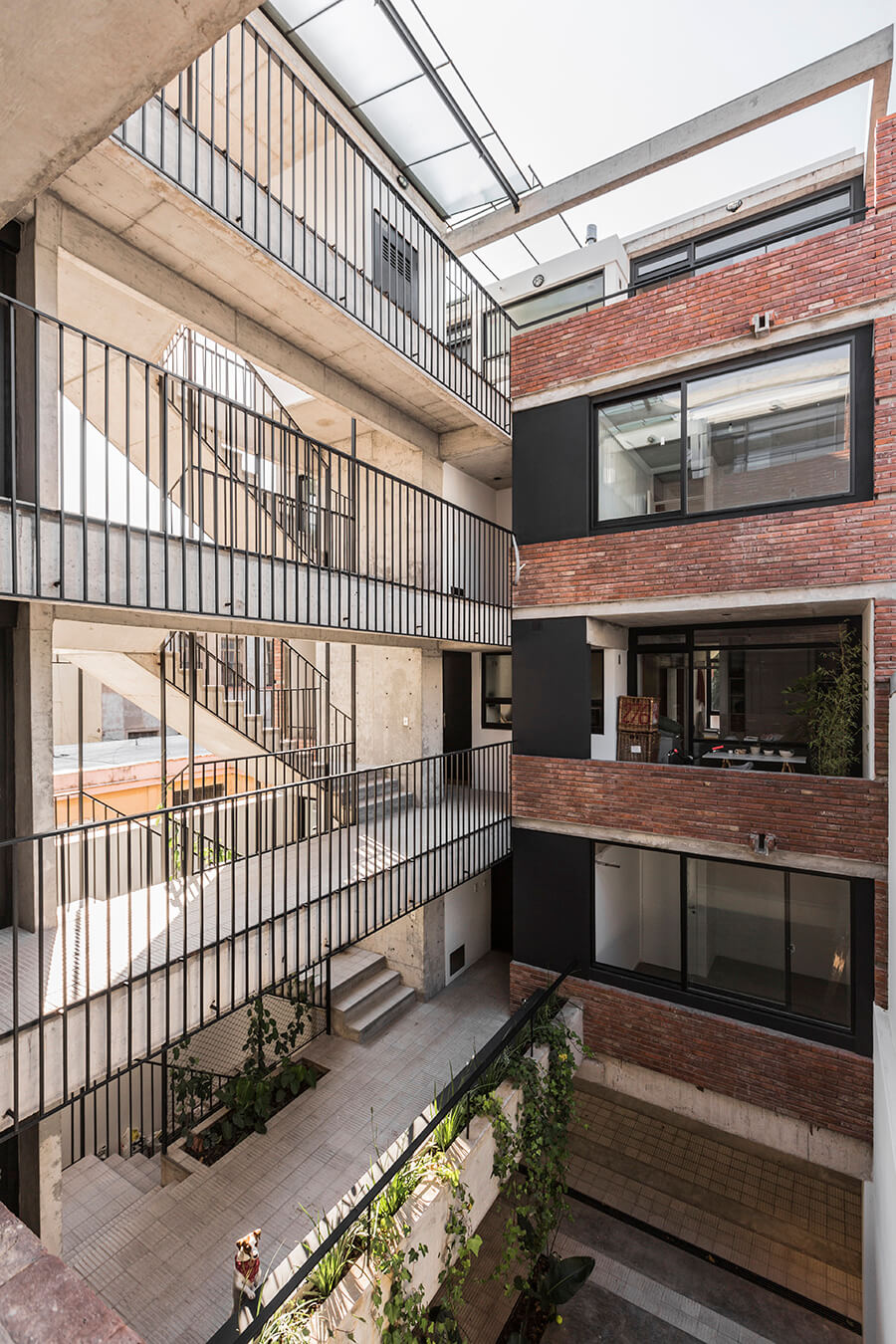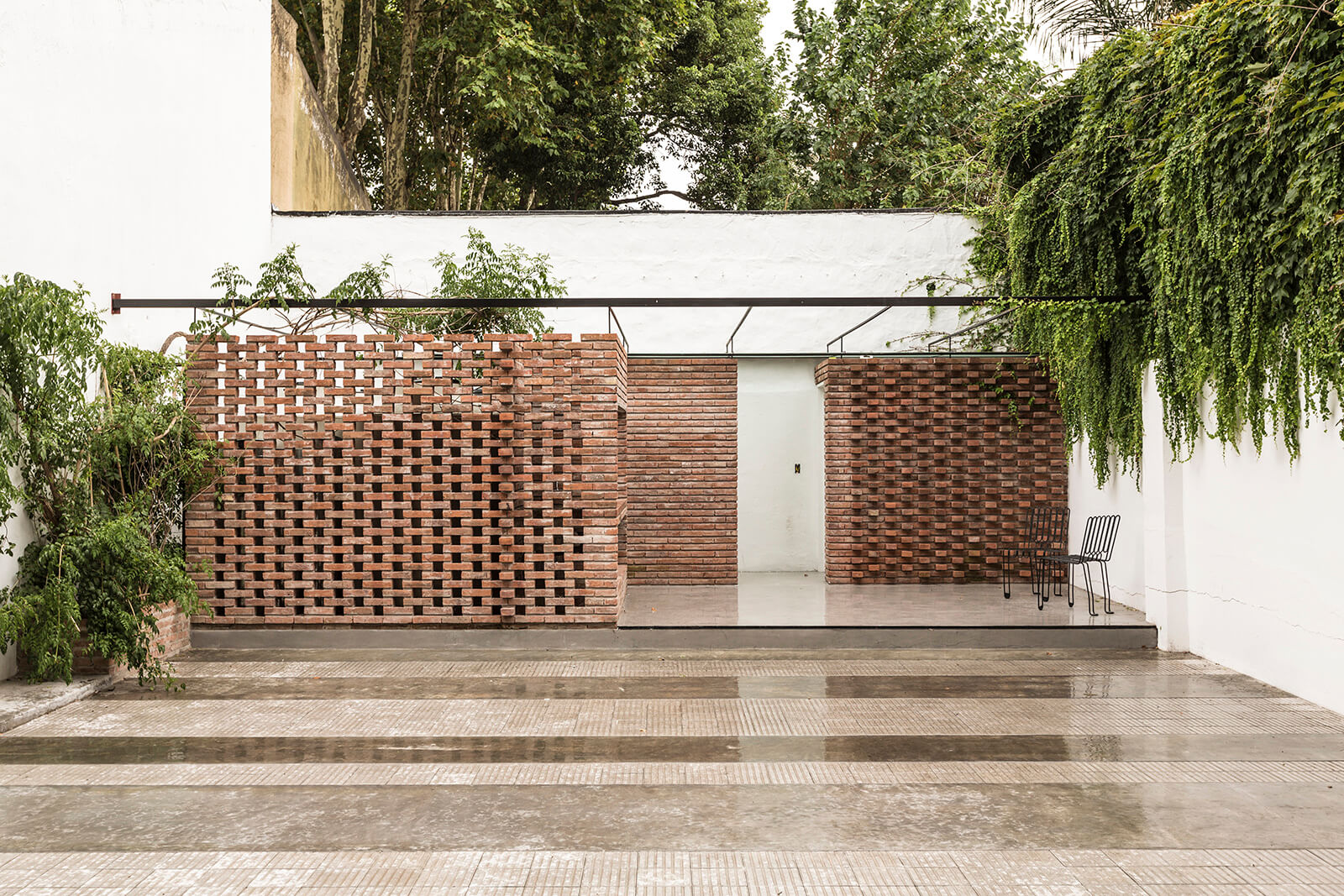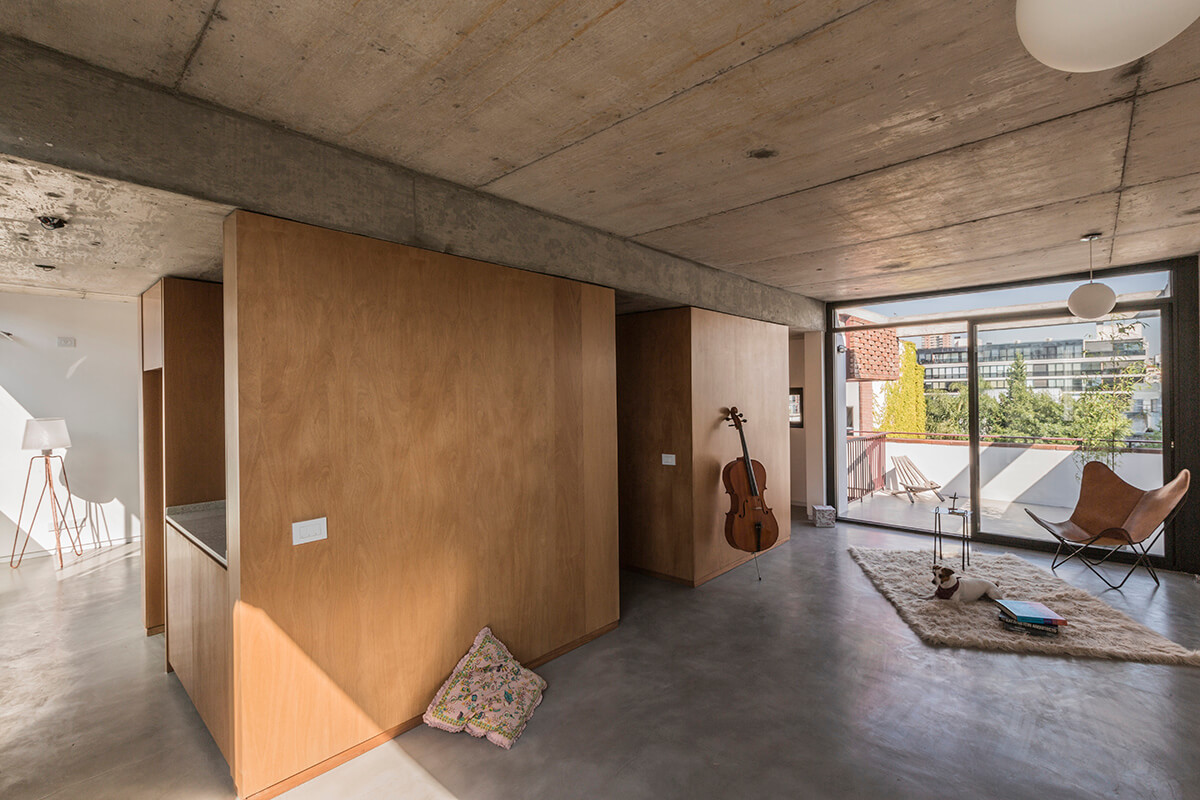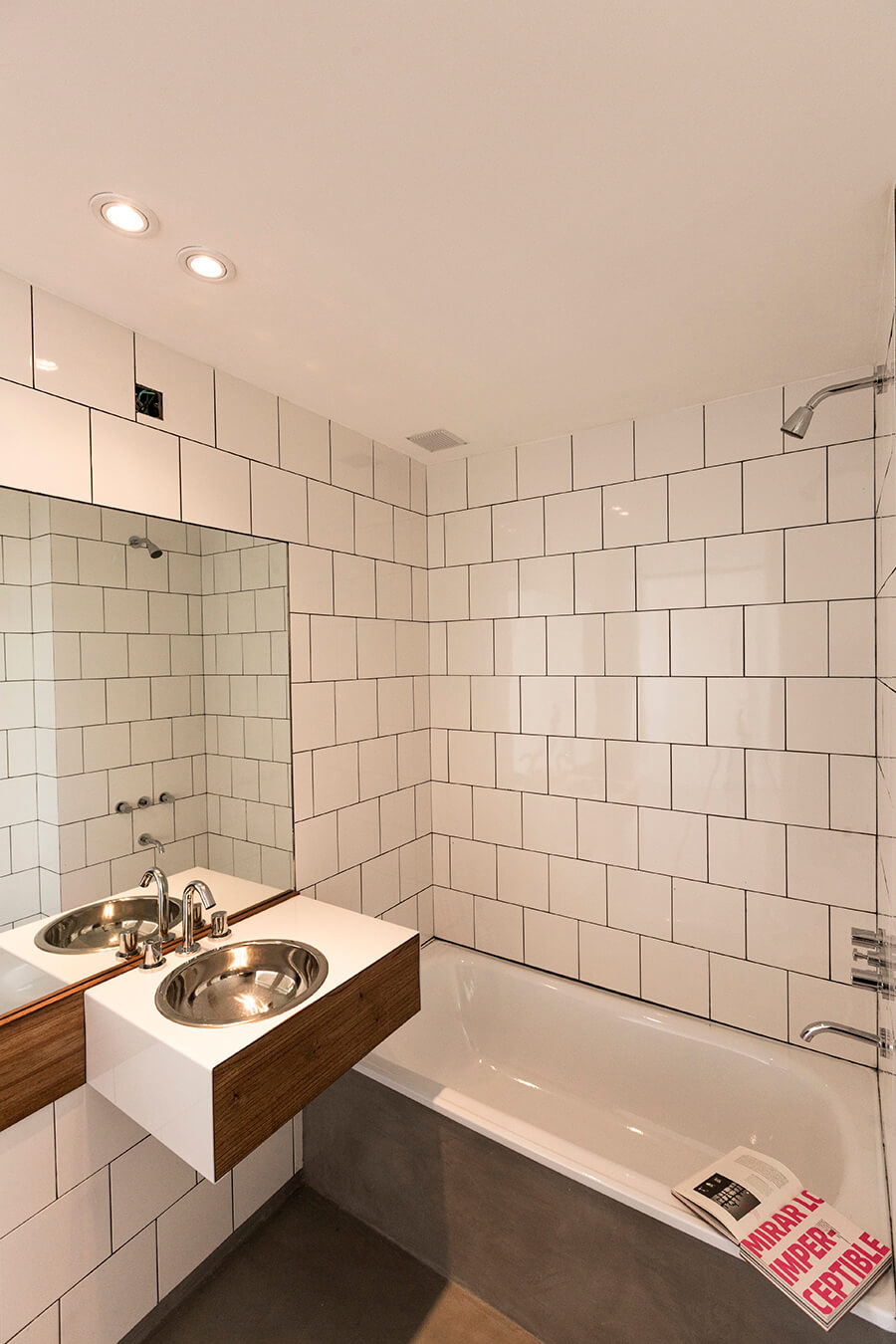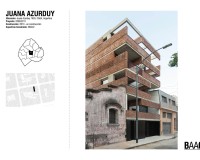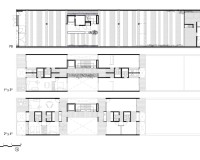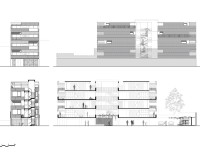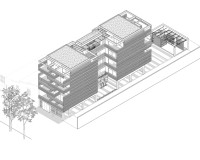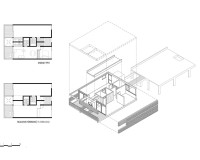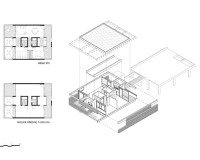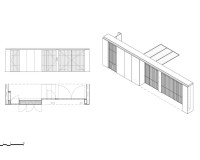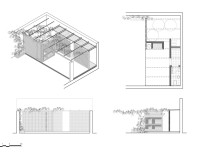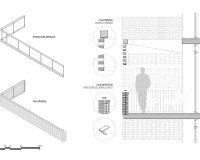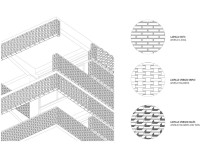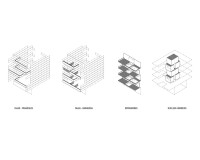JUANA AZURDUY / BAAG
JUANA AZURDUY / BAAG
Description
Juana Azurduy 1635 is a residential building that consists of two four-story wings separated by an inner courtyard. It’s located on a low rise and residential Núñez neighborhood block, which stands out due to the fact that a public school, full of mature plantains and ash trees, takes up half of its surface. The building looks to provide an urban statement, making a point of considering the wall that divides it from the school a façade and not just a “blind” wall.
A series of 90-centimeter-high horizontal “strips” were carved out of the brick walls on all four sides of both wings. These strips serve as a brise-soleil, as well as window sills and screens for the openings. Every balcony, terrace and window has a specific spatiality. There are double-height spaces, spatial expansions via brise-soleil, screens to ensure privacy and directed views: a series of unique features that help whoever lives there to make it his or her own space.
The building has one-bedroom and two bedroom options, which alternate depending on the floor level. These units are articulated around a central core that houses the kitchen and bathroom spaces. This core has a wooden sheathing and movable panels; by using them it becomes possible to modify the limits of each space, as well as allowing public and private spaces to switch places. Our goal was to create apartments that were capable of adapting to the resident’s needs, in line with his or her preferences.
The dichotomy of scales between the taller apartment blocks and townhouses is resolved through the sculpted volume of convex and concave bends of curved glass. Simultaneously responding to local constraints and offering a new spatial typology, the façade plane “peels off” into novel bow windows.
Why brick?
Brick is a very common material in Argentina. From our office, BAAG Buenos Aires Arquitectura Grupal, we seek to think about projects from their material condition, and understand that a way to generate relevance in architecture is by working with the available materials and popular wisdom. From that closeness and immediacy provided by the brick, we project buildings that in addition to identifying with the city, involve innovations in the usual technology. The brick also allows the construction of bris soleil, filters, screens with textures and other situations that generate uniqueness in each space.




